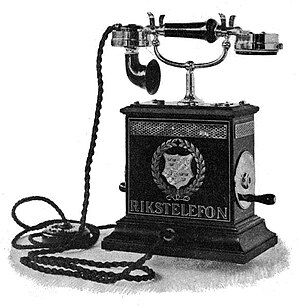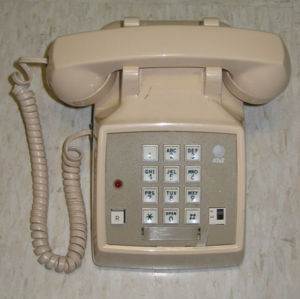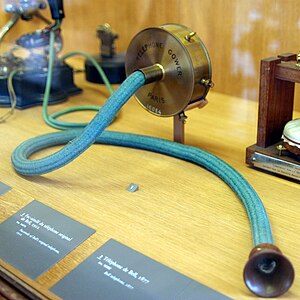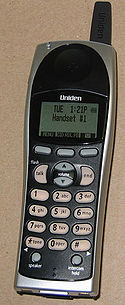Talk:Telephone
Removed these Wikipedia images:


Telephony over IP vs. Voice over IP
Before reading this article, I had never run into the term "telephony over IP", and I worked with digital telephony well before it. Unless there is an authoritative term for ToIP, I recommend doing away with it and staying with VoIP, which is the term in all standards with which I am familiar. Howard C. Berkowitz 14:55, 25 July 2008 (CDT)
Looking in the article history, I see ToIP mentioned as differentiated from VoIP as not having to run over the public Internet, but, in practice, most commercial VoIP does not run over the same network as commercial Internet services. They share a common optical transmission infrastructure, but the VoIP channels are variously in different multiplexed subchannels, or operate in different IP virtual private networks (VPN) engineered to deliver the quality of service required for VoIP. ~VoIP may connect to a common "end office" (twisted pair) or "head end" (cable TV), but the services usually separate at that point. Howard C. Berkowitz
Concern about using marketing terms for technology
In the later parts of this article, I'm seeing some terms, used perhaps for niches, that may be confusing several terms.
First, telephones need both control/signaling and information transfer. The former, in modern networks, is Signaling System 7 in the core; you may see ISDN Q.931 or SIP on the edges; interfaced to SS7 networks if they interconnect. SS7 can run over a dedicated network (e.g., SSCOP) or over IP (SIGTRAN).
Information transfer can be analog, digital streams (e.g., T1/E1 over SONET/SDH), or packetized digital (VoIP). I don't understand the difference being made between ToIP and VoIP, and not sure there is a meaningful one.
See [[locality of networks). Wireless phones within a premises are subscriber local distribution, as opposed to cellular and hybrid satellite/cellular and IEEE 802.16 (wireless local loop), which are alternatives to (mostly copper) local loops. I'm not sure pair gain systems even need to be mentioned. Non-telco local loop is likely to be on cable, although 802.16 may be making inroads. I'm also not sure if DSL should be brought up, mostly in the ADSL variant sharing copper local loop for analog voice and medium-speed data.
Comments?
Howard C. Berkowitz 01:28, 31 August 2008 (CDT)
Cannot resist...
Once there was an elephant, Who tried to use the telephant— No! no! I mean an elephone Who tried to use the telephone— (Dear me! I am not certain quite That even now I've got it right.) Howe'er it was, he got his trunk Entangled in the telephunk; The more he tried to get it free, The louder buzzed the telephee— (I fear I'd better drop the song Of elephop and telephong!)
Howard C. Berkowitz 17:15, 11 September 2009 (UTC)
Dial vs manual phone
- A nice story on that decision is here. --Daniel Mietchen 19:01, 17 September 2010 (UTC)



